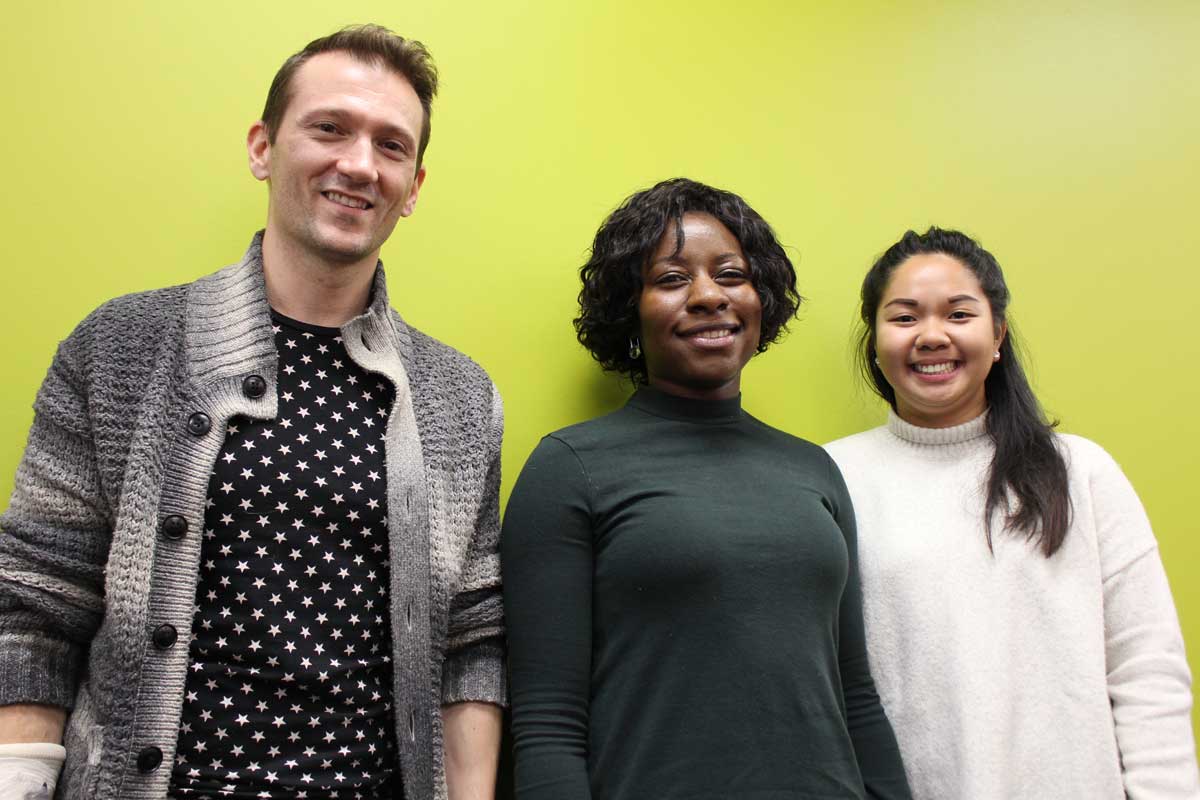Learning from each other

Photo: From left: John Edwards (nursing), Daphne Mazarura (urban and regional planning) and Karla Ting (social work) see the connections between their disciplines.
No profession or discipline exists in a bubble. This is the philosophy behind Interprofessional Education (opens in new window) (IPE) at the Faculty of Community Services (opens in new window) (FCS). Defined as “two or more professionals learning with, from and about each other to improve collaboration and the quality of care,” the initiative seeks to foster team-based educational opportunities between students of different disciplines.
“If I’m a registered dietitian, and there’s a nurse working with the same client that I’m working with, it helps if I know something about what nurses do, and if they know something about what registered dietitians do,” said Sanne Kaas-Mason, IPE project manager at the Faculty of Community Services.
This year, 25 students are participating in IPE placements, in which students from a variety of programs attend an experiential education placement together at a community agency. The placements give students from different disciplines a chance to work with others to create synergies.
For example, Ryerson nursing student John Edwards and social work student Karla Ting are currently in year-long placements at Fife House, an agency which provides affordable housing and community support services to people living with HIV/AIDS.
“We all come in with our own points-of-view and competencies,” said Edwards. “But as we say, ‘This is how I would look at a problem,’ we’re discovering more and more that we’re governed by the same rules. What feels like very separate professions you’ll find out aren’t, and as a result we’ll start communicating in the same language. We’re finding there’s a lot of overlap, and now we understand what each person’s job is and how we can delegate to and lean on each other.
“I’m worried about [the patients’] health, their mental state, what’s going on with their food. A social work student can point me in directions to help each client. I’ve seen what social work has to offer after I’ve worked on how to keep their bodies going.”
Daphne Mazarura, an urban & regional planning student and executive member of the Ryerson Interprofessional Student Association (RISA), pointed to last year’s O’Keefe Lane design competition (opens in new window) . “That was a prime example of how urban planning has to collaborate with other professions. You’re looking at the university students, Covenant House, and businesses in that area, and how that small space would require not just urban planners’ understanding, but the understanding of the people using the space.”
“Social work and nursing work pretty close together, but I haven’t crossed paths with a lot of urban planners,” said Edwards. “In this project, we got access to a new voice that we don’t normally have. When thinking about health, it didn’t occur to us that how a neighbourhood or hospital is built can affect healthcare.”
“We know that we have assumptions and biases about each other based on the disciplinary group that people belong to," said Kaas-Mason. "These implicit or explicit biases and assumptions are often fed by a lack of knowledge about each other. Interprofessional Education can infuse knowledge into that equation. The more we learn about each other – our roles, our practice, our values, our language, our tasks - that can change our behaviour as we interact. And that will benefit the people and communities we serve”
Check the Faculty of Community Services site for more on Interprofessional Education (opens in new window) .